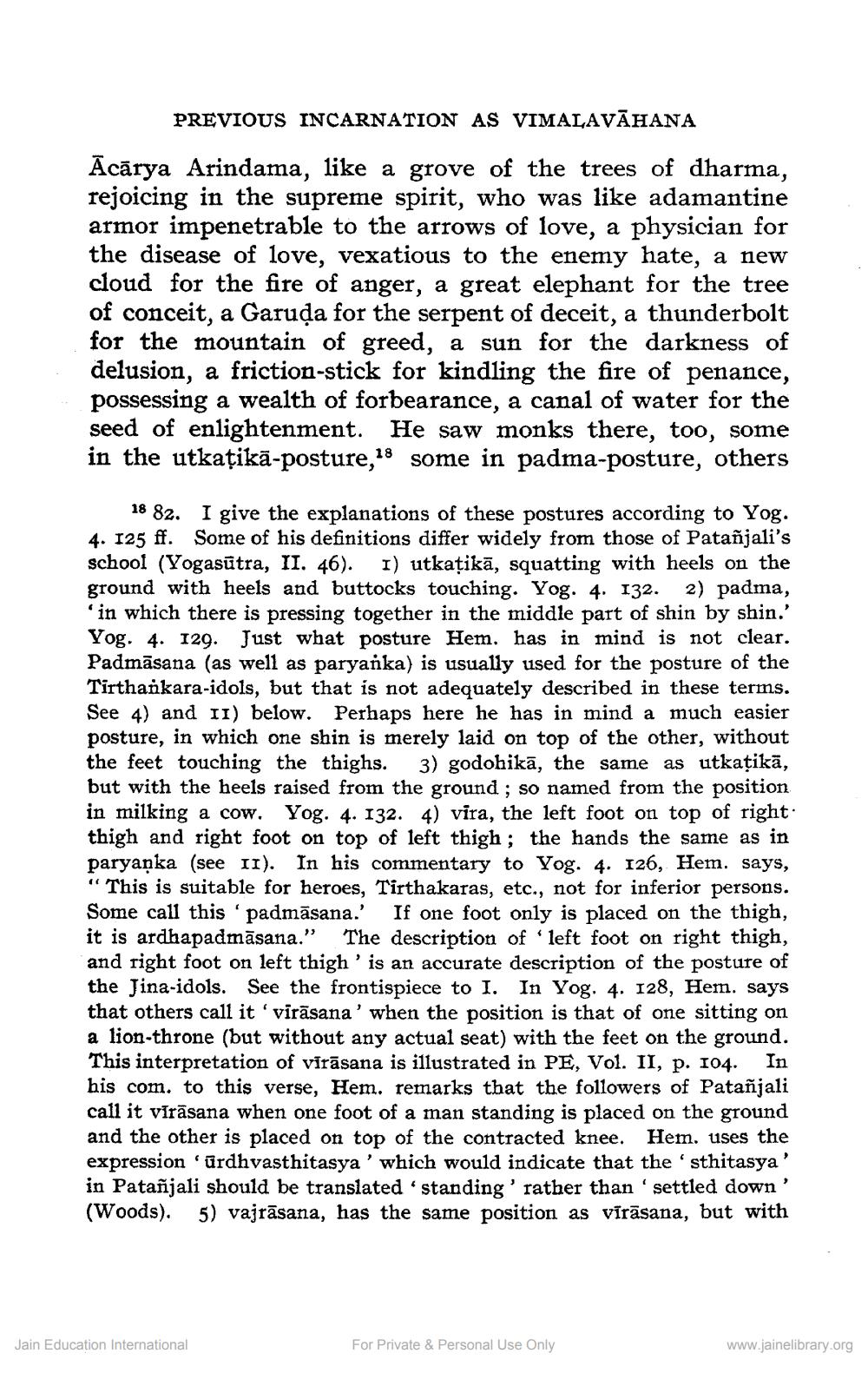________________
PREVIOUS INCARNATION AS VIMALAVĀHANA
Ācārya Arindama, like a grove of the trees of dharma, rejoicing in the supreme spirit, who was like adamantine armor impenetrable to the arrows of love, a physician for the disease of love, vexatious to the enemy hate, a new cloud for the fire of anger, a great elephant for the tree of conceit, a Garuda for the serpent of deceit, a thunderbolt for the mountain of greed, a sun for the darkness of delusion, a friction-stick for kindling the fire of penance, possessing a wealth of forbearance, a canal of water for the seed of enlightenment. He saw monks there, too, some in the utkatikā-posture,18 some in padma-posture, others
18 82. I give the explanations of these postures according to Yog. 4. 125 ff. Some of his definitions differ widely from those of Patañjali's school (Yogasūtra, II. 46). I) utkatikā, squatting with heels on the ground with heels and buttocks touching. Yog. 4. 132. 2) padma, 'in which there is pressing together in the middle part of shin by shin.' Yog. 4. 129. Just what posture Hem. has in mind is not clear. Padmāsana (as well as paryanka) is usually used for the posture of the Tirthankara-idols, but that is not adequately described in these terms. See 4) and II) below. Perhaps here he has in mind a much easier posture, in which one shin is merely laid on top of the other, without the feet touching the thighs. 3) godohikā, the same as utkatikā, but with the heels raised from the ground; so named from the position in milking a cow. Yog. 4. 132. 4) vira, the left foot on top of right: thigh and right foot on top of left thigh, the hands the same as in paryanka (see II). In his commentary to Yog. 4. 126, Hem. says, "This is suitable for heroes, Tirthakaras, etc., not for inferior persons. Some call this 'padmāsana. If one foot only is placed on the thigh, it is ardhapadmāsana." The description of 'left foot on right thigh, and right foot on left thigh' is an accurate description of the posture of the Jina-idols. See the frontispiece to I. In Yog. 4. 128, Hem. says that others call it 'virāsana' when the position is that of one sitting on a lion-throne (but without any actual seat) with the feet on the ground. This interpretation of virāsana is illustrated in PE, Vol. II, p. 104. In his com. to this verse, Hem. remarks that the followers of Patañjali call it vīrāsana when one foot of a man standing is placed on the ground and the other is placed on top of the contracted knee. Hem. uses the expression 'ūrdhvasthitasya' which would indicate that the 'sthitasya' in Patañjali should be translated 'standing' rather than 'settled down' (Woods). 5) vajrāsana, has the same position as vīrāsana, but with
Jain Education International
For Private & Personal Use Only
www.jainelibrary.org




